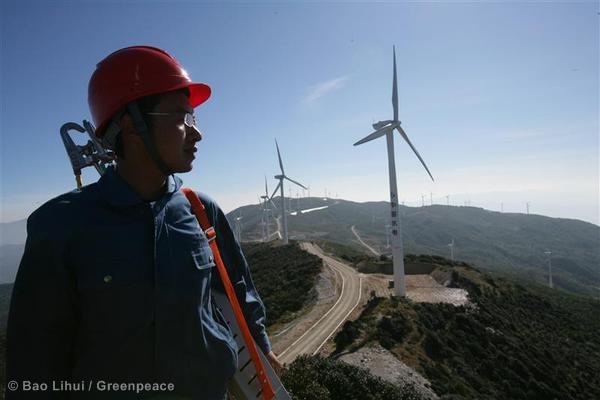I was part of a delegation from Pakistan that was selected to attend a training program on Renewable Energy Integration into the Grid in Central Asia at the North China Electric Power University (NCEPU) in July 2015. It was an eye-opener for us in terms of the extensive work being done in China, and the tremendous opportunities for Pakistan to integrate renewables such as wind and solar within the energy mix. Participants from Mongolia and Tajikistan were also present with us during this course.
For three weeks, professors from the university gave lectures on technical, commercial and policy aspects of integrating renewable energy into the national electricity grid.
Key initiatives for renewables were covered by a policy “slogan”, and China has a track record of supporting slogans with clear policies, implementation plans and substantial budgets. Some of these themes were covered during our course and selected due to their relevance to Pakistan.
Go global
Chinese companies are being encouraged to change the way they engage with countries abroad. This is mainly to move away from only exporting equipment to becoming joint-venture partners in providing long-term energy solutions. An example provided was an electricity distribution company in China forming a joint venture with a similar company in the Philippines. Banks in China are now providing financing for such ventures, such as the planned 1,000 megawatt Quaid-e-Azam Solar Park in Pakistan.
One Belt, One Road
Pakistan plays a prominent role within China’s Belt and Road initiative, which China has prepared to develop trade and transport routes overland across the historical Silk Road and a maritime link through the Gulf region across to Europe.
While the China-Pakistan Economic Corridor is an important part of the initiative, Pakistan is only one of 68 countries that will have prominent roles, therefore the country will need to accommodate the interests of China while maintaining our national priorities.
Global Power Internet
During the course, we were informed that the 120,000 megawatts of wind power installed in China is mostly in the west of the country, while the power consumption is in the east. This poses the challenge of transporting large electrical energy across China while minimising losses. These power transmission challenges are driving China to develop ultra-high voltage direct current (UHV-DC) transmission systems, which allow rapid transmission of electricity over continental distances in an intelligent manner, thus the term “internet” is being attached to power. One day the these highly efficient lines will cover intercontinental distances. EU and USA are also working on developing long-distance power transmission.
The Mongolian participants of the course are keen to adopt this new technology to export renewable energy to China considering the substantial potential of wind energy in their country. The voltages for DC transmission being tested in China are 11 million volts, which is more than 20 times the highest transmission voltage of 0.5 million volts in Pakistan. With Chinese assistance, DC transmission trials will also be conducted in Pakistan to improve our electricity distribution. Higher voltage lines enable large amounts of electrical energy to be transmitted through a relatively small conducting wire. The advantage of DC transmission is mainly in the lower losses over long distances.
Company and factory visits
As part of the training course, participants visited the Tai’an switchgear factory, the Baodang Yingli solar panel factory and the China State Grid renewables facility in Hebei province, which is testing a 70 megawatt battery storage facility to smooth out solar and wind energy fluctuations for better integration into the electricity grid.
Product quality observations
It was obvious from our experiences during the course that China is now able to produce extremely high quality products; the fast train, high-quality switchgear, wind turbines and solar panels were all examples we witnessed.
We were, however, disappointed that during two meetings with very large solar panel and solar water-heater manufacturers, they were willing to wrongly label Pakistan-bound products as being of a quality higher than they really are to reduce cost. We hope the Chinese government will take greater measures to phase out this practice as this is no longer needed considering their capability to produce world class products.
Building links
Pakistan can certainly benefit by maintaining a strong link with the North China Electric Power University, which sets a good example of how to provide a platform for research and technology adoption in business and state enterprise to promote enhancement of renewable energy.
Collaboration with the Chinese government and companies in China is certain to grow, as wind and solar energy is bound to become a greater part of the energy mix in Pakistan in future.







